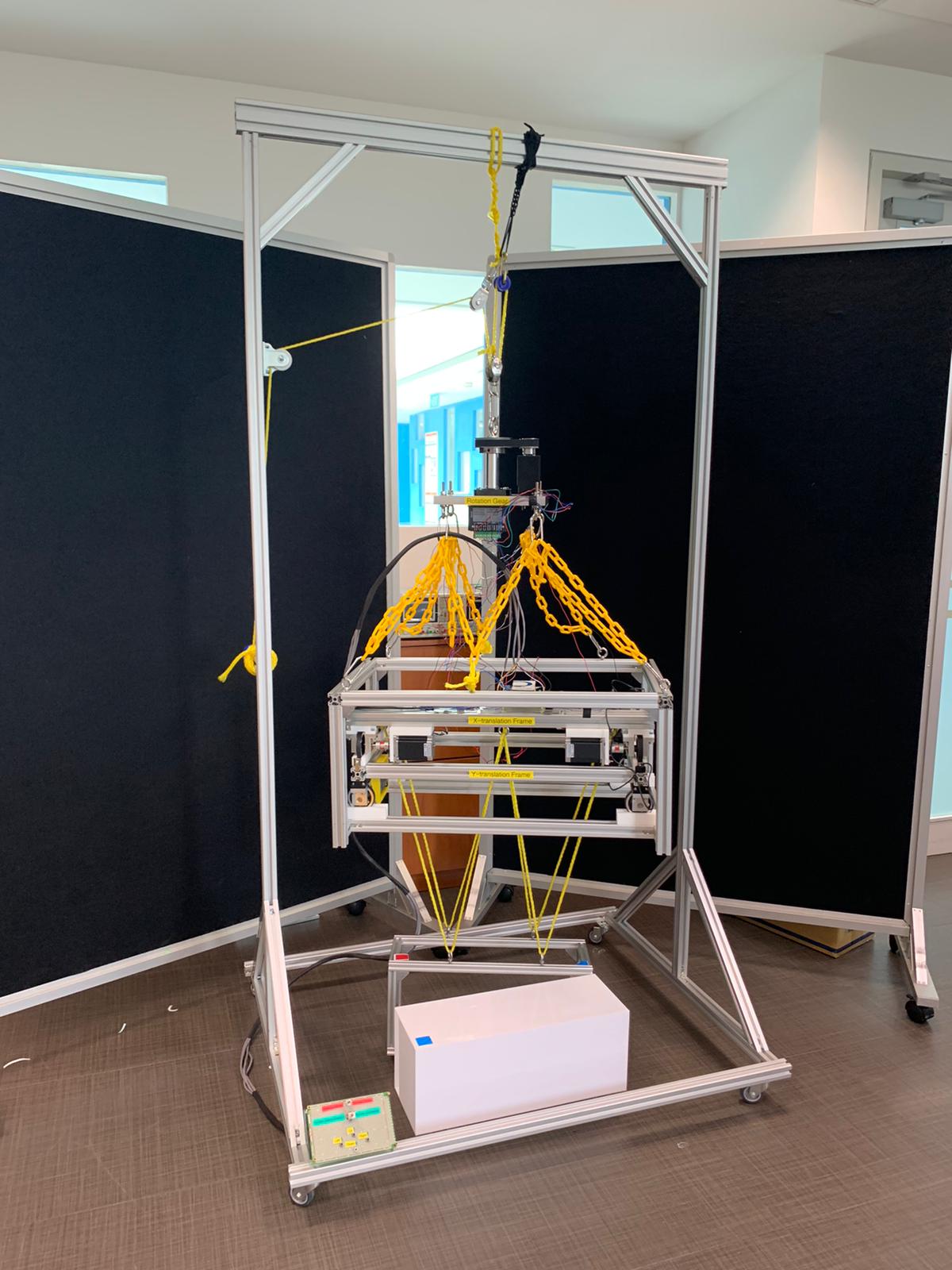GUIDECK: Semi-automated orientation and positioning system for installation of PPVC modules

Physical prototype of GUIDECK
Project Motivation
In order to improve productivity in the construction sector, the Singapore Government has been pushing aggressively for the adoption of the prefabricated prefinished volumetric construction (PPVC) method where large modular room-sized units are manufactured in factories and delivered to construction sites to be installed using cranes, similar to stacking of LEGO bricks. The Building and Construction Authority, as well as the Housing Development Board, aim for at least 35% of public housing projects to be constructed using PPVC in 2019.
However, current installation methods of PPVC modules are labor-intensive, inefficient, and pose high risks to construction workers. During this installation process, several workers are stationed around a module – which typically weighs up to 35 tonnes and measures up to 12 m by 4 m in length and width – while it is being hoisted into place using a crane. They use guide ropes and their hands to pull and push the module into the correct orientation and position before it is set down. The process is coordinated by foremen and normally needs to be repeated several times before the module is placed with sufficient accuracy.
It may take up to three hours for a crew of eight workers to hoist and manually align a PPVC module during installation while working at heights of up to 40 storeys from the ground. Therefore, this project aims to design a means to improve the productivity and safety of PPVC installation by reducing the manpower and time required for the alignment process.
Design
The proposed solution, GUIDECK, is a semi-automated system that comprises a motorized lifting frame coupled with computer vision to provide an operator on the ground with visual guidance to more easily and accurately position a PPVC module during installation.
GUIDECK’s motorized lifting frame enables the operator to rotate and translate a PPVC module that has been hoisted into position using a crane. The PPVC module is attached to a translation mechanism which consists of three independently stacked sub-frames with direct wheel drives. These enable the sub-frames to move independently along two horizontal axes in order to translate the PPVC module. On the other hand, the rotation mechanism consists of a cylindrical shaft that hangs from the hook of a crane, coupled with a flat plate from which the frames for the translation mechanism are suspended. The rotation mechanism is actuated using a motor plus timing belt assembly. When the motor is powered, the plate will rotate about the shaft which enables the planar orientation of the PPVC module to be adjusted.
These translation and rotation movements on the lifting frame are controlled by an operator using a control panel that has a visual display to indicate the location and orientation of the module relative to its intended position. The corners of the module are marked with different colors and tracked using cameras that are mounted on the lifting frame. Using computer vision, the distance between each marker and its pair on adjacent modules is calculated and shown on the display. Hence, the operator has real-time visual guidance which can be used to orientate and position the PPVC module more accurately before it is set down. The concept is similar to assisted parking systems that are already being used for vehicles. Therefore, with GUIDECK, the manpower required to install a PPVC module could be reduced to three persons.
A 1:20 scaled prototype of GUIDECK was designed to test and demonstrate the proposed solution. Preliminary tests on the prototype show that the system is able to orientate and position the module within an accuracy of 5 mm from its target area. However, the lifting frame and module may tilt by up to 4 degrees from the horizontal plane after the translation adjustments are completed. In order to resolve this problem, the tilt angle should be accounted for in the adjustments and a self-balancing mechanism should be included in the lifting frame.

Project Team
Students:
- La Wunn Htet Aung (Mechanical Engineering, Class of 2021)
- Muhammad Faris B Azzli (Mechanical Engineering, Class of 2021)
- Nyang Shaw Bin (Mechanical Engineering, Class of 2021)
- Siow Ming En Isaac (Civil Engineering, Class of 2021)
Supervisors:

